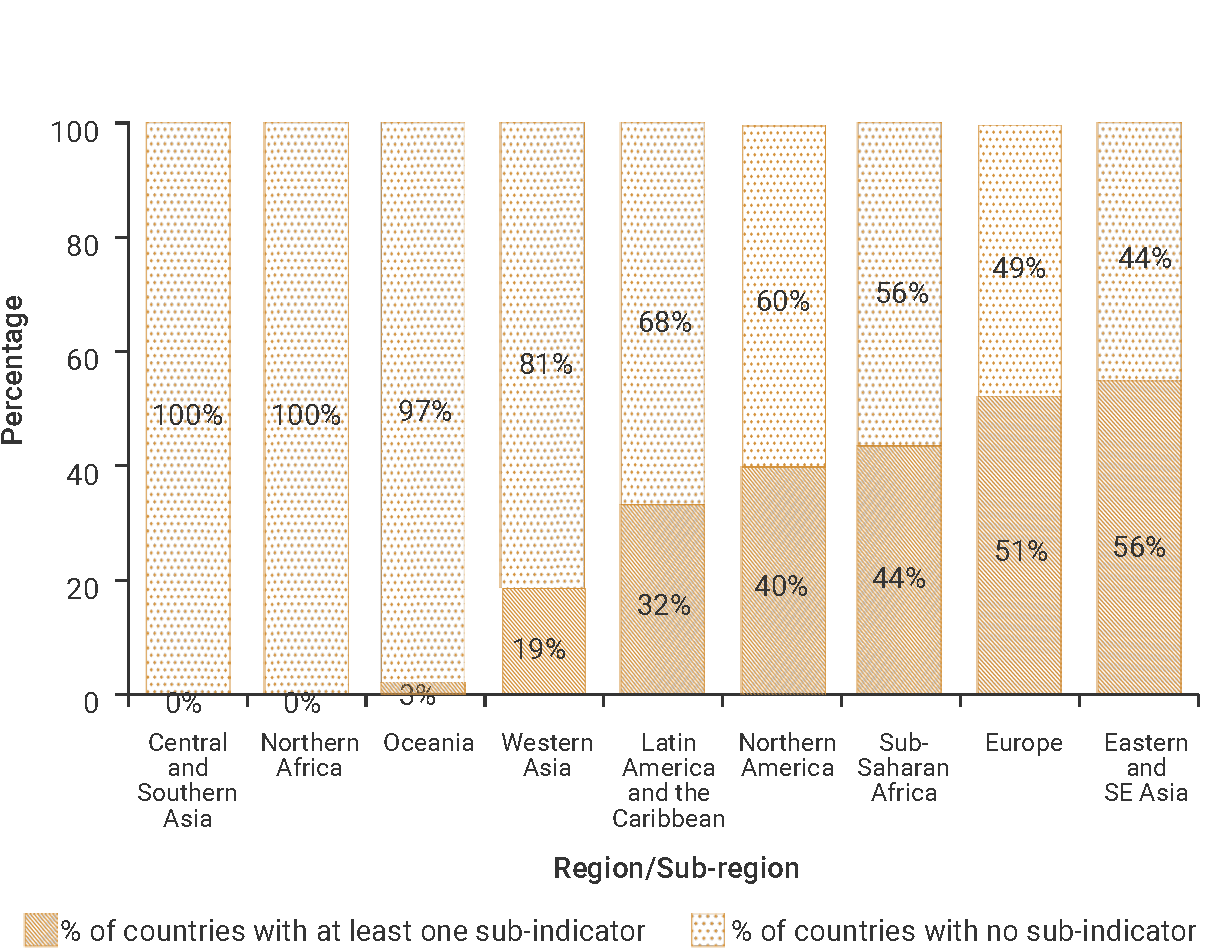SDG Indicator 14.2.1: Number of countries using ecosystem-based approaches to managing marine areas
1. Key features and metadata
Definition: This indicator documents the number of countries that have adopted national policy frameworks to ensure the implementation of Integrated Coastal Zone Management (ICZM) and other area-based, integrated planning and management instruments in waters under national jurisdiction, including exclusive economic zones (EEZ).
| Sub-indicator | Disaggregated by |
|---|---|
|
EN_SCP_ECSYBA Number of countries using ecosystem-based approaches to manage marine areas (1=YES; 0=NO) |
Marine spatial plan implementation stage (Initial plan preparation; Plan development; Plan adoption/ designation; Implementation and adaptive management). |
Sources of information: Data provided by national governments through the Regional Seas Programmes or collected directly by the United Nations Environment Programme (UNEP).
Related SDG Indicators: 14.1.1 (Index of coastal eutrophication and plastic debris density), 14.5.1 (Coverage of protected areas in relation to marine areas), and 17.14.1 (Number of countries with mechanisms in place to enhance policy coherence of sustainable development).
2. Data availability by region, SDG Global Database, as of 02 July 2025

3. Proposed disaggregation, links to policymaking and its impact
| Proposed disaggregation | Link to policymaking | Impact |
|---|---|---|
|
Implementation of an ecosystem-based approach, by the jurisdiction of area-based marine integrated planning (UN 1982; National Oceanic and Atmospheric Administration [NOAA] 2023):
|
This disaggregation aims at detailing the categories of maritime zones where ecosystem-based approaches are implemented. The provision of sound information on the actual scope of maritime zones covered by ecosystem-based integrated planning is necessary for highlighting where it is lacking and the types of measures to develop in accordance with the characteristics of the concerned zones of intervention. This disaggregation points out the sea categories where the marine integrated planning efforts of each country are placed and, conversely, where steps should be taken to fill the gap. This aim is to integrate the management of coastal and marine environments as well as the land-sea interface to enhance the ecosystem services of marine and coastal areas and the resilience of vulnerable communities. | The purpose is to advance the use of integrated area-based management tools based on cross-sectoral cooperation and policycoherence. This is to support countries’ actions to sustainably manage various ocean areas. For example, establishing marine/maritime spatial planning and ICZM development; promoting Marine Protected Areas (MPA); protecting coral reefs, mangroves and seagrass; addressing nutrient pollution; developing clean maritime transportation and the blue economy; and supporting eco-tourism (UNEP 2009; UNEP and EC 2017). |
|
Coordination mechanisms in place at which level:
|
This disaggregation aims at estimating the degree of integration of the operational national framework in relation to marine areas. It gives policymakers the opportunity to enhance the coherence, consistency and effectiveness of their national framework in line with the recommendations of the UNEP Marine and Coastal Strategy (UNEP 2009). In particular, in relation tocross-sectoral strategies governing marine and coastal ecosystems and the alignment of biodiversity and development objectives. | Cross-sectoral cooperation between government departments and agencies, as well as between economic sectors is essential for achieving the sustainable management of oceans. To address the various threats that ocean ecosystems are experiencing, institutional arrangements and coordinated mechanisms must be taken to ensure that sectors responsible for environmental pressures – such as maritime navigation, tourism, fisheries, agriculture, energy exploitation, or mining – are committed to the sustainable use of ocean ecosystems. Cross-sectoral approaches are needed at differentlevels (local, national, regional, and global) due to the transnational nature of oceans(UNEP 2019a; UNEP 2024b). |

